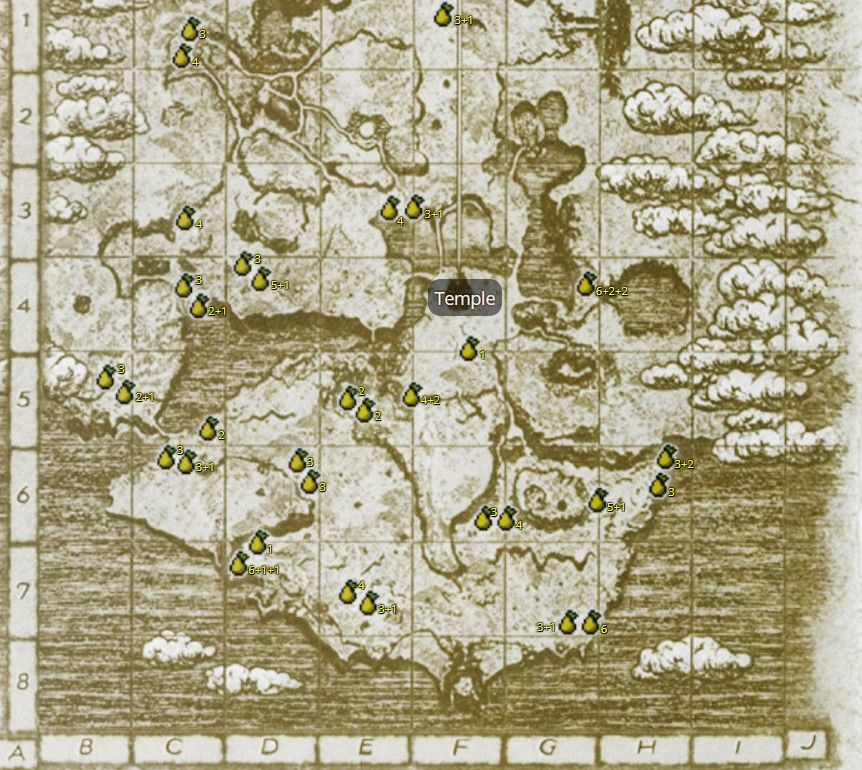

- #Shadow of the colossus map how to#
- #Shadow of the colossus map ps3#
- #Shadow of the colossus map ps2#

#Shadow of the colossus map ps3#
Note that even the PS3 version today is still slow sometimes (but the hardware is quite different so it’s hard to compare), take a look at the comparison by Eurogamer.
#Shadow of the colossus map ps2#
Also : " the PS2 could only sample a single texture, and either add or alpha blend with the screen." ( Source) This explain maybe why the fur is only composed with 2 distinctive alpha textures (one for the layers and one for the tufts). Still, it’s a nice performance and was most of the time playable.

Yet, it’s really an heavy technique and combined with huge landscapes it’s not surprising that the game when it comes out was lagging/slow. The PS2 has also an excellent fillrate which made the overdraw of the fur a not so big problem. The Playstation 2 has a strong bandwidth to deal with the textures and the vRam (48gb per second, double of what the Playstation 3 have today). Avion is a good example, he has a very nice blue shadow on his belly. Note that the vertex color are also used to give a natural Ambient Occlusion to the Colossi. The vertex colors are also used to blend the borders of the layers and smooth the transition of the fur with the skin. These textures are only with shade of grey, the color of the fur comes with the vertex colors. The alpha texture used to blend the whole fur is maybe common and smaller, there is a 64×64 pixels texture used as the base for the fur which can be used as an alpha texture. So the layers are divided in 3 groups, 2 layers use the same diffuse texture. There is 1 single fur texture but in 3 versions : white, grey and one more darker (but not black). The layers are spaced with the equivalent of the height of the player’s hand (I know, that a strange reference). 6 is the common number, but some Colossis can go higher (the first one has 8 layers for example). The Fur applied for the big parts of the Colossi are a set of polygon layers. While the tufts are cool to see, they are in a very limited number, they are mostly used the give a better transitions between the parts with and without fur. The tufts are very simple to understand, they are just simple planes (a single quad grouped) to give the feeling of a tufts. (Note that they use a similar one for the grass ingame in certain areas.) So, how does the FUR work exactly ? The Colossi use 2 different techniques to display the Fur : a set of planar polygons and some tufts (single quads). I’m amazed on how clever their technique is. This is certainly the main reason why I wanted to extract and look inside the game : understand THEIR fur technique. And even if the making of Shadow of Colossus explain a bit how they have done this part of the Colossi, it is still a bit blurred in my mind.
#Shadow of the colossus map how to#
I have done some search on how to generate fur for real-time rendering and I found some papers here and here.

The first thing which fascinated me in the game was of course the Colossi and especially the fur on them which give an incredible look to them. The purpose is educational and the work presented here go to their respective authors. So the following blog post is a breakdown of the game from my personal point of view (I don’t know at all how it was made originally). If you are also interested about the story and the environments I recommend you to read the blog of Nomad. I’m interested about the technical side only. I started some month ago to try to go deeper on how the game was made. I’m still amazed about how they were able to handle so impressive Colossi and environments on a console like the Playstation 2. It’s an important influence for my own projects today. I’m a big fan of the game Shadow of the Colossus.


 0 kommentar(er)
0 kommentar(er)
